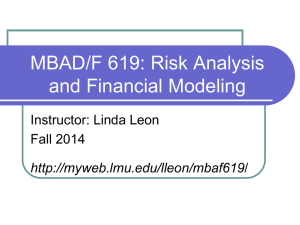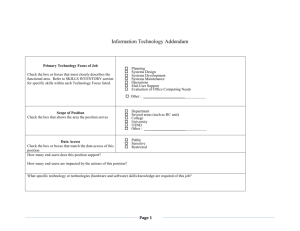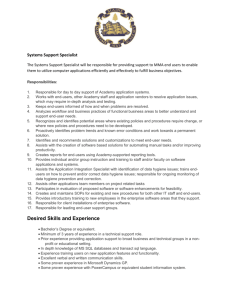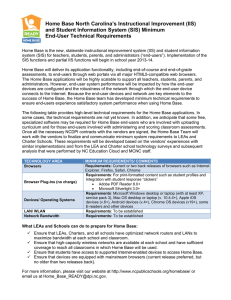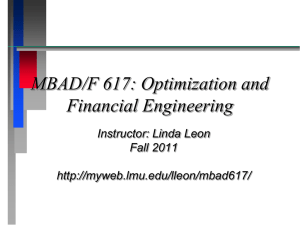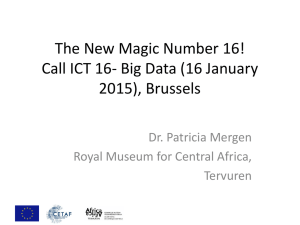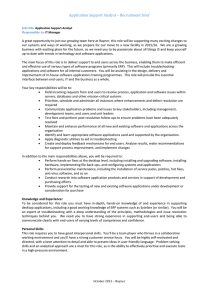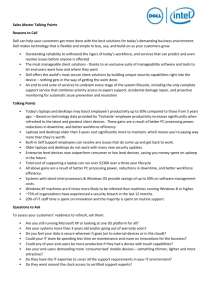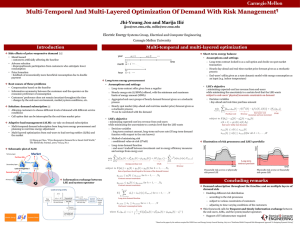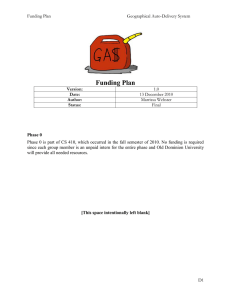Introduction to Course
advertisement
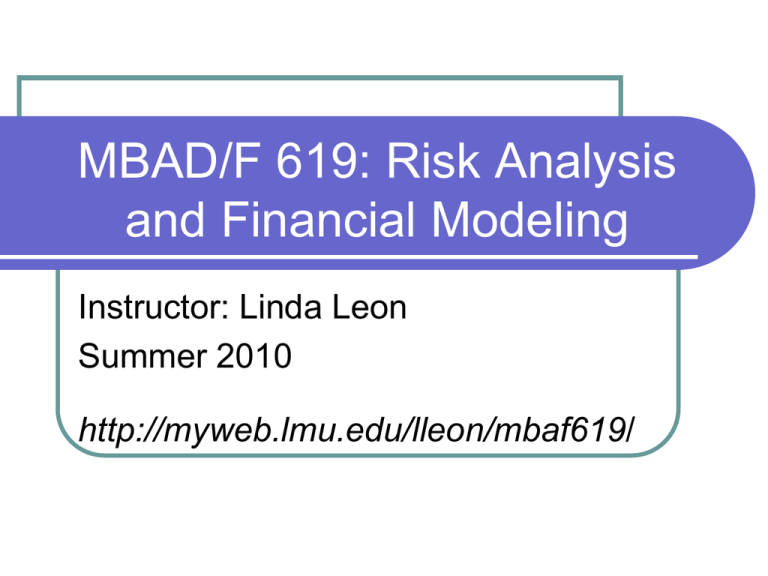
MBAD/F 619: Risk Analysis and Financial Modeling Instructor: Linda Leon Summer 2010 http://myweb.lmu.edu/lleon/mbaf619/ Overview of Financial Modeling Addresses problems and decisions related to a firm’s assets and liabilities Investment decisions identify which assets should be purchased Financing decisions determine the sources of funds necessary to purchase the assets Sets the objectives for future investment and financing decisions, judges the effects of various decisions and guides the decisions about which investment or financing alternatives should be undertaken Financial Modeling: An Overview of Relationships Between Inputs and Outputs Special Analysis Fund Flow Analysis Pro forma Statements Ratio Analysis Investment Data Financial Model (computer program) Financial Data Operating History and Future Assumptions Staff Inputs Manufacturing or Service Inputs Sales Inputs Two General Approaches to Financial Modeling Simulation Process of imitating the firm so that the possible consequences of alternative decisions and strategies can be analyzed prior to implementation (MBAD/F 619) Optimization Identifies which decision alternative leads to a desired objective given a specified set of fixed assumptions (MBAD/F 617) Overview of Risk What is your definition of risk? Types of financial risk Capital risk Liquidity risk Systematic risk Systemic risk Risk Management Applications Investment Decisions Capital Budgeting Mergers & Acquisitions Real Estate Portfolio Strategies Financing Decisions Cash budgeting Working Capital Management Debt Financing Options Financial Modeling Many financial models which use advanced modeling and analytical techniques are spreadsheet based There is a market demand for more sophisticated models and analysis by financial end-users Most end-users prefer to develop their own models (cost,flexibility) Advantages of End-User Modeling End-users get closer to the raw data and the assumptions being made End-users can customize the models to generate information that fits their needs End-users can see results easily and immediately, which enhances strategy generation and encourages risk analysis Disadvantages of End-User Modeling Incorrect information is generated by inappropriate or inaccurate models (20 to 40% contain significant errors) End-users are overconfident about the quality of their own spreadsheets Poorly designed models can discourage strategy generation and risk analysis End-users may not always employ the most productive methods for generating insights or may misinterpret the generated information Recent spreadsheet research shows… End users typically do not plan their spreadsheets End users rarely spend time debugging their models End users almost never let another person review their spreadsheets Many end users do not consistently use tools that can make modeling productive and insightful
